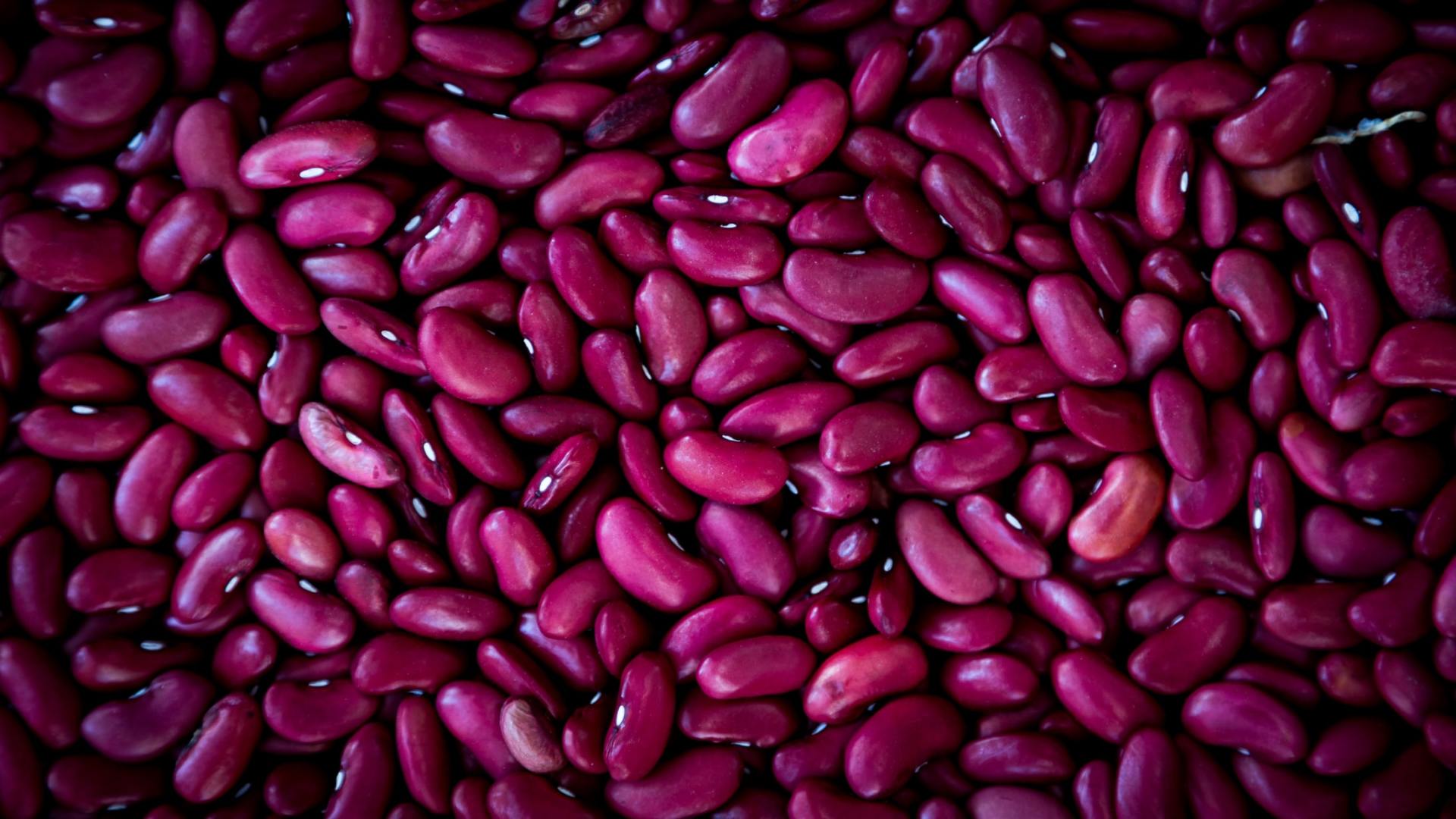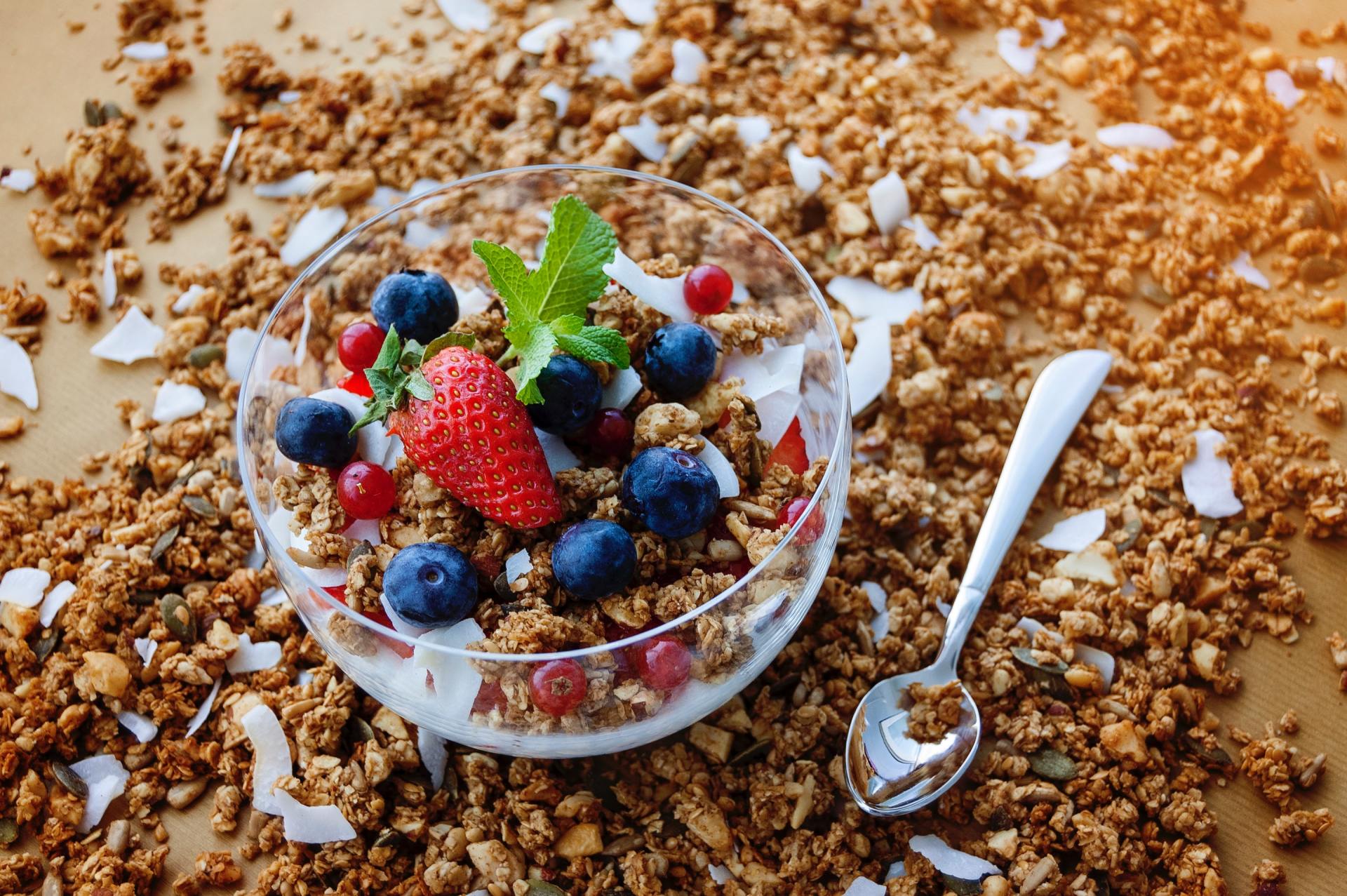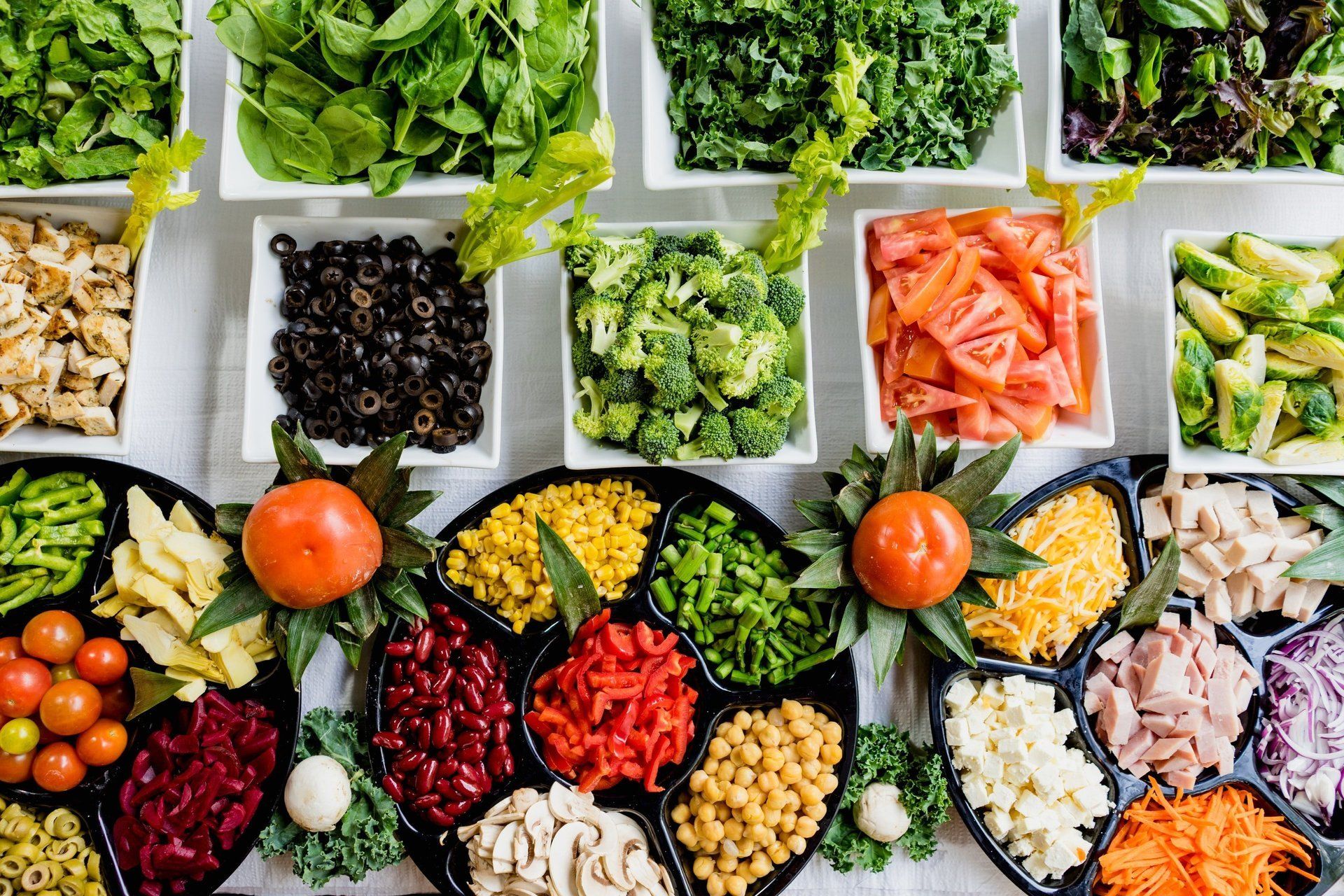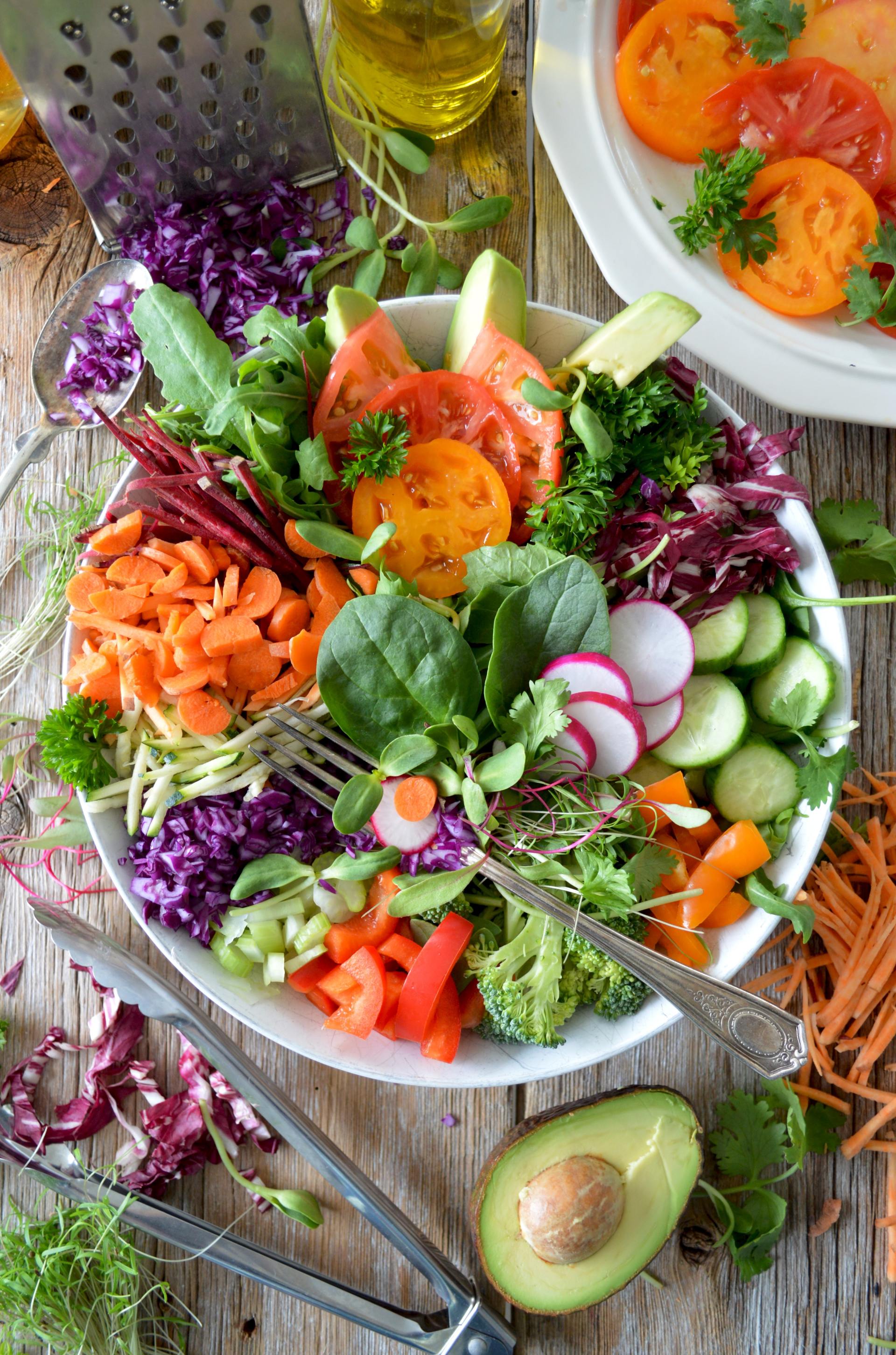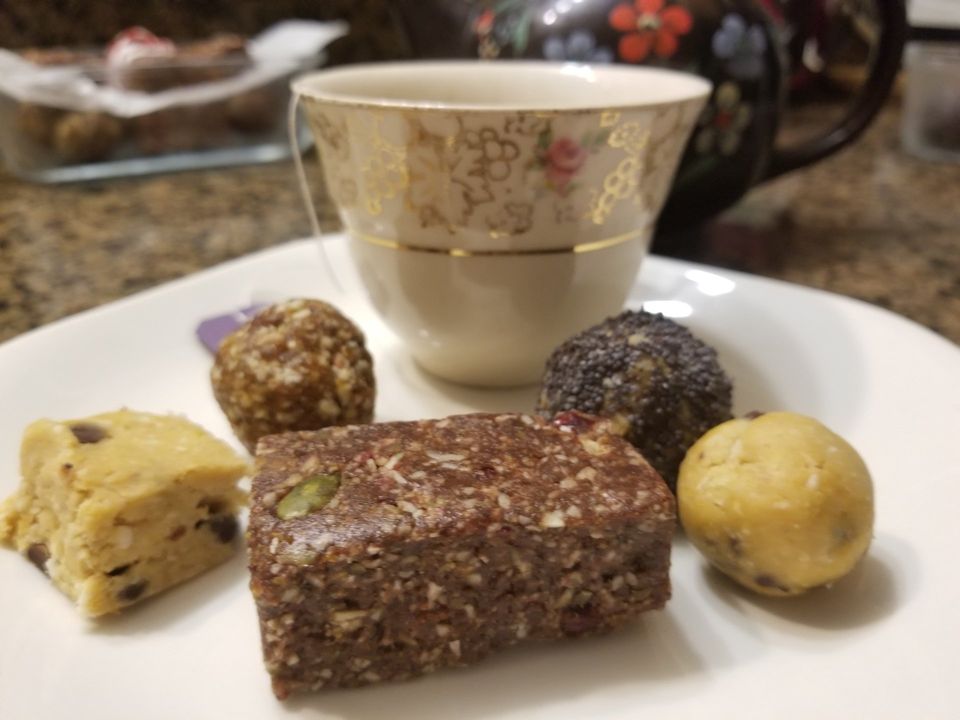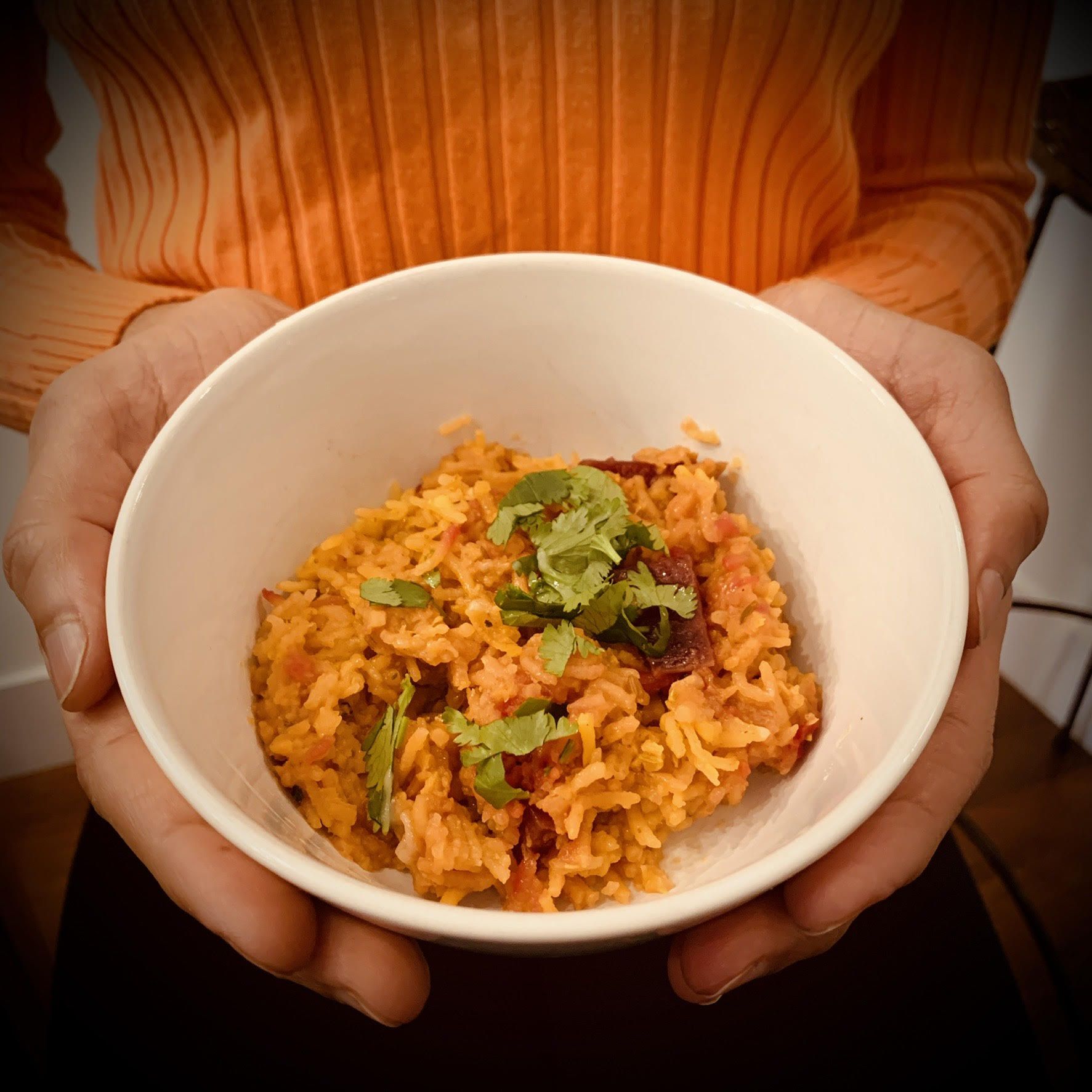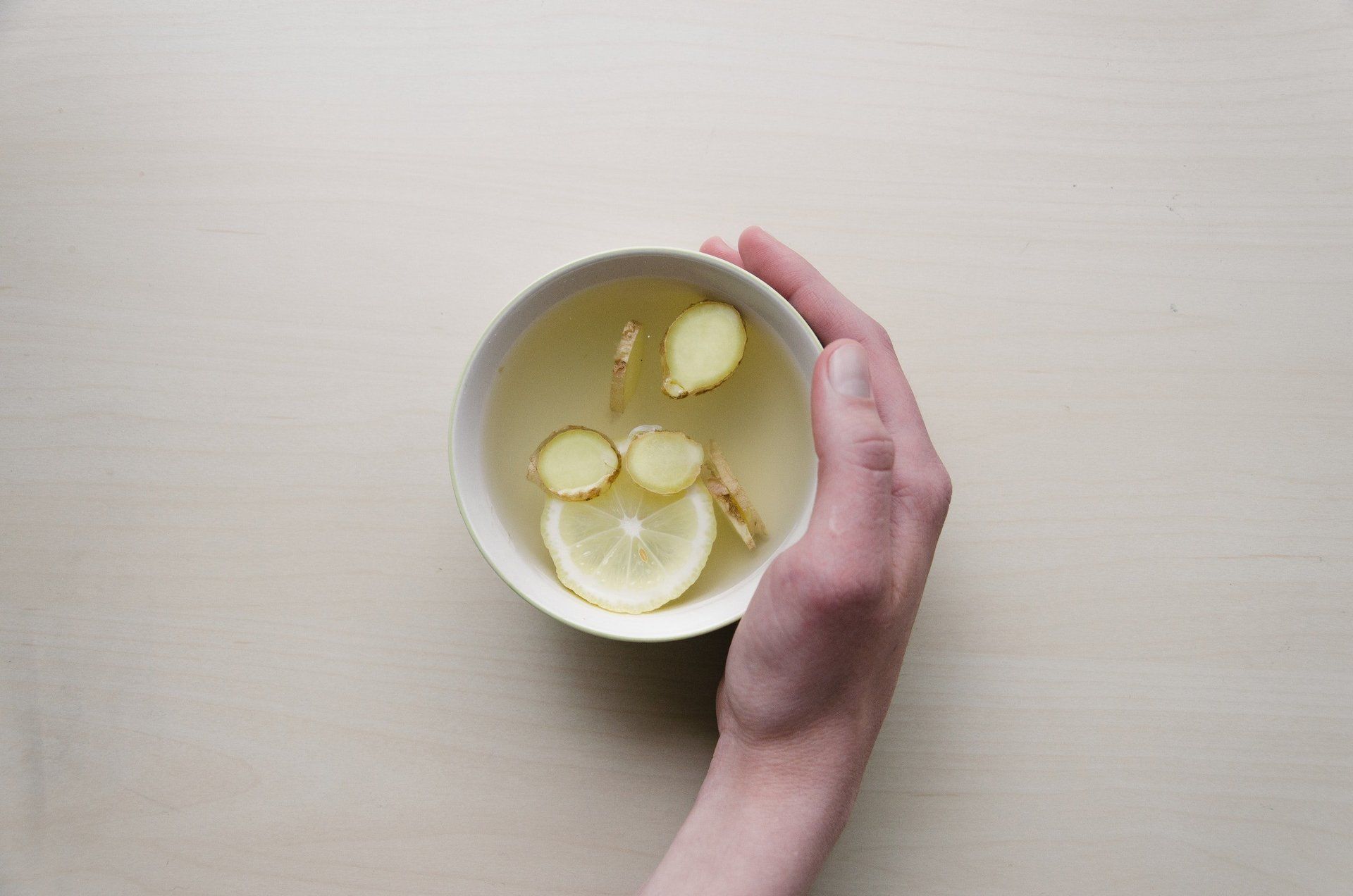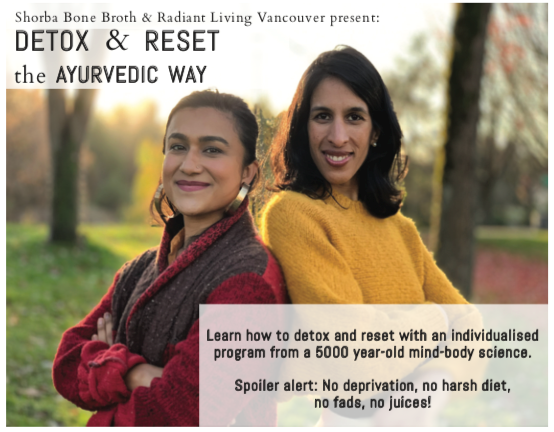Peanut Butter Chickpea Chocolate Chip Cookie Dough Bites
Protein-packed, easy prep and kid-approved- these cookie dough balls pack up in lunches or fuel you on-the-go, they also make nice tea snacks.
In creating a new healthy cooking weeknight workshop this past month, I was busy tweaking my energy ball recipes, protein bars, granola bars and the like. The picture above was a sampling from the The Sweet Fix: Healthy Snacks Workshop that we did last month. All of these are no-bake and whipped up in a food processor. (Pictured from left to right: Chickpea blondie (using this recipe), Apricot, Almond & Cardamom Energy Bite, Chocolate Pumpkinseed Cranberry Bar (nut-free), Lemon-Poppyseed Maca-roon, Peanut Butter Chickpea Chocolate Chip Cookie Bite (from this recipe).
I happened upon a load of cooked chickpeas- leftovers from a catering gig... so after making humus and tons of chickpea curry, I put my creative cook's hat on to work out what to do with even more of the leftovers. (The potential for food waste actually made me loose sleep- so these came to me in a kind of waking dream!)
I set to making a chickpea-based cookie dough ball, but I didn't want to taste the chickpea- so I added peanut butter (which is also in the legume family and compliments nicely). Note: Sub any other nut or seed butter for a school-friendly, peanut-free version. And chocolate chips of course!
I am currently always on the hunt for low-sugar, protein-rich snacks, both for my growing toddler and for myself. I am 5 months pregnant and really feel the need for the extra energy boost mid-afternoon (ok, and also in the middle of the night sometimes!) These deliver on both of those notes- getting sweetness from a little maple syrup and from the bit of cane sugar in the dark chocolate chips. The protein-packed chickpeas, combined with the coconut oil stabilize those sugars, so they are longer-lasting energy, without the dip that refined sweets are nutorious for.
You can roll these into balls for 'cookie dough balls' or press them into a pan for 'peanut butter chocolate chip blondies'. If you have a little helper like me, they love rolling them into balls (and dino-shapes and more!)
Peanut Butter Chickpea Chocolate Chip Cookie Dough Bites
Makes an 8X8 ” pan
Or 24 dough balls
Prep time: 10 min (No Bake!)
Cookie dough really is the best part of making cookies, am I right?
This cookie dough will surprise and impress cookie dough connoisseurs- and they are super protein-packed from chickpeas and peanut butter! With no refined sweetener (ok, just a touch of sugar in the chocolate chips!), and free from dairy and eggs as well; making them a treat that you can enjoy more oftenJ These last for 4 days in the fridge or for months in the freezer.
*Make these GF by using GF-certified oats, or omit oats and sub 1/3 cup extra coconut instead.
Ingredients
1 14oz can chickpeas, drained and rinsed OR 1 ½ cups cooked chickpeas
3 Tbsp natural peanut butter
2 Tbsp coconut oil (room temp or melted)
¼ cup maple syrup or other liquid sweetener
1/3 cup oats*
1/3 cup coconut
1/3 cup mini chocolate chips
Directions
·In a food processor, blend all except chocolate chips until smooth.
·Stir in mini chocolate chips and form balls for cookie dough balls,
·Or to make a square instead (I call these ‘chocolate-chip chickpea blondies’ ) by pressing into a 8X8 ” pan
·Let set in fridge for at least an hour. Store in the fridge or freezer. (These pack well in lunches, they are just a little softer when warm)

